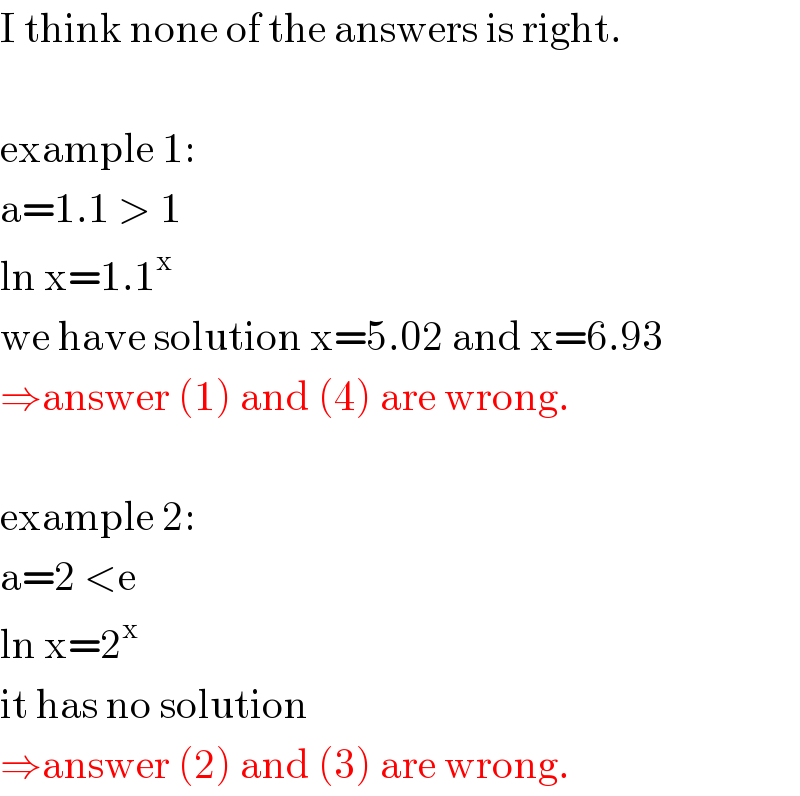Question Number 15184 by Tinkutara last updated on 08/Jun/17
![If y = ln x and y = a^x have a solution then find the range of a. (1) (0, 1) (2) ((1/e), e) (3) (1, e) (4) (0, 1]](https://www.tinkutara.com/question/Q15184.png)
Commented by mrW1 last updated on 08/Jun/17

Commented by Tinkutara last updated on 08/Jun/17

Commented by mrW1 last updated on 08/Jun/17
![the max. value of a is not to calculate algebrically.it is about 1.10215. so the range of a should be (0, 1.10215]](https://www.tinkutara.com/question/Q15259.png)
Commented by Tinkutara last updated on 08/Jun/17

